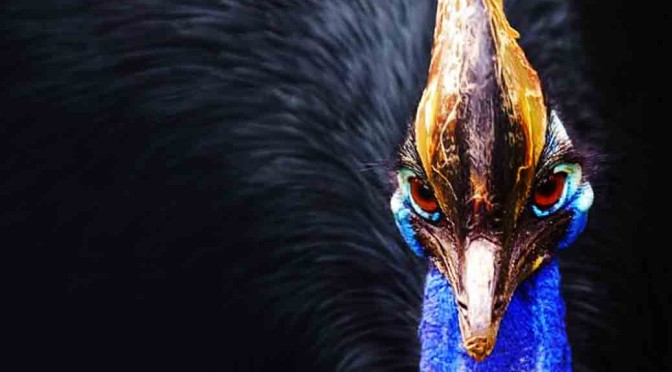By Anupum Pant
Cassowary
Flightless like the largest bird that ever lived on earth, there is a bird which looks like a turkey-ostrich crossbreed and is significantly smaller than the former. Yet it is one of the largest birds still alive. Unpredictable and aggressive are the two words that describe it. Zoo keepers find it extremely hard to deal with it, as handling it without getting injured in the process is difficult.
Casuarius casurarius, or simply Cassowary has been named the world’s most dangerous bird in the Guinness Book of Records. Found in the rain forests of Australia and New Guinea, these shy birds can slice you into two pieces with a single fatal kick (slightly exaggerated). Despite its stellar self-defense kicks, it has been unsuccessful in protecting itself from humans. It remains on the endangered species list.
The main reason for its population decline is the clearance of its habitat. Other things that contribute to the decline are deaths from motor vehicles, dog attacks, hunters and wild pigs.
How does it kill? – 3 ways
1. It will chase you down: Cassowary can run at speeds up to 50 kph.
2. 12 cm long claws will rip you:
“The inner or second of the three toes is fitted with a long, straight, murderous nail which can sever an arm or eviscerate an abdomen with ease. There are many records of natives being killed by this bird.” – Wikipedia
3. High Jump: A Cassowary can jump up to a height 1 meter. Remember, at this point, its 12 cm claws can reach a very vulnerable point.
They aren’t demons
In case of an encounter, turn your back and It could kill you. But there is a great chance it won’t if you keep facing it.
